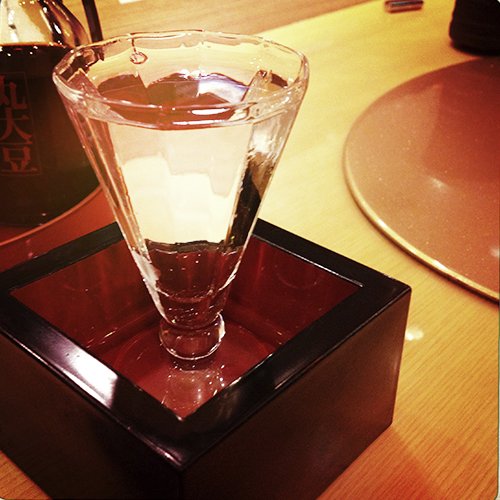Eating Old School in Kanazawa, Japan
Chocolate is food and we believe in developing our palette as makers. Fortuna was born after all from our love of ingredients, of food craft and new flavors. Kanazawa on the Eastern shores of Japan's main island bordered by two rivers and the 'Japanese Alps' was an incredible place to explore all three.
"Kanazawa's Omicho Market has been one of Ishikawa Prefecture's top seafood markets for 300 years. Fresh seafood and shellfish are delivered from the Sea of Japan to the market on a daily basis." Coming from deep market culture in Mexico we seek out the markets in each new place we visit.
Omicho was an incredible place to eat the absolute freshest seafood and some favorite dishes expertly prepared with the high quality fish. Like these Chikuwa (竹輪) a common snack made of fish and steamed & broiled around a stick of bamboo.
Gold eating is a profound part of Kanzawa gastronomy and this is my golden kaisen donburi, a bowl of rice topped with fresh sashimi in this case from the marketplace below.
"Kanazawa-haku (gold leaf) production dates back over 400 years in the region, aided in part by Kanazawa’s high humidity and abundant rainfall. Because even the smallest amount of static electricity can tear the thin, delicate sheets. Gold leaf is produced by mixing gold with silver and copper which is sandwiched between blotting paper and repeatedly machine beaten into sheets 2/10,000 of a millimeter in thickness. Kanazawa produces 99% of Japan's high-quality gold leaf. The gold leaf that covers the famous Golden Pavilion in Kyoto was produced in Kanazawa. Gold leaf is even put into food. The city is famous for tea with gold flakes, which is considered by the Japanese people to be good for health and vitality.”
We once stayed at a bath house nestled into Mount Haku (白山 "White Mountain") a dormant volcano near Kanazawa. For our bento (packed lunch) they sent us with these onigiri wrapped in paper which we ate at the summit of Hakusan. Food always tastes better outside with a beautiful view, how can we translate that into flavor? Along with Mount Tate and Mount Fuji,Mt Haku is one of Japan's "Three Holy Mountains" (三霊山, San-rei-zan). In 1980 it was part of a region designated by UNESCO. Because of volcanic activity, the area is is well known for its many onsen, or hot springs. After hiking back down we enjoyed the onsen tubs constructed of Japanese cedarwood and a delicious washouku (Japanese kitchen) meal before the most relaxing sleep on tatami mats and futon cushions.
The sake produced in the Kanazawa region is made with rice grown in the prestigious Ishikawa Prefecture, where its high levels of rainfall ensure a continuous supply of clean, fresh water, is considered to cultivate the rice ideal for producing high quality sake. Sake a result of fermentation is kin to chocolate, another fermented food. We appreciate the Japanese attention to raw, originating ingredients as the root for high quality food craft. We aim to provide the same level of care and reverence for origin with the chocolate we make.
Higashi Chayagai is known as the tea house district in Kanazawa. It has moved through several phases alternately known for geisha and for tea houses. This neighborhood was spared large-scale fire disasters and WWII bombings, making it one of the best-preserved historic districts in Japan. We enjoyed an afternoon of being architecture nerds and eating soft serve green tea ice cream.
One of the reasons we chose to visit Kanazawa was because of it's historical garden, for 400 years generations of gardeners have cared for special trees in this incredible place. The relationship cultivated between trees and human beings is fascinating and we love making chocolate with the understanding that we are part of a lineage of human interaction with the cacao tree that is thousands of years old.
"Kenroku-en is one of the Three Great Gardens of Japan and was developed from the 1620s to the 1840s. Its name was derived from the "Chronicles of the Famous Luoyang Gardens" (洛陽名園記), a book by the Chinese poet Li Gefei (李格非), and stands for the six attributes of a perfect landscape: spaciousness, seclusion, artifice, antiquity, waterways, and panoramas."
chikuwa at the market
sake in kanagawa
picnic lunch hiking
gold eating
higashi chayagai
Kenroku-en garden






